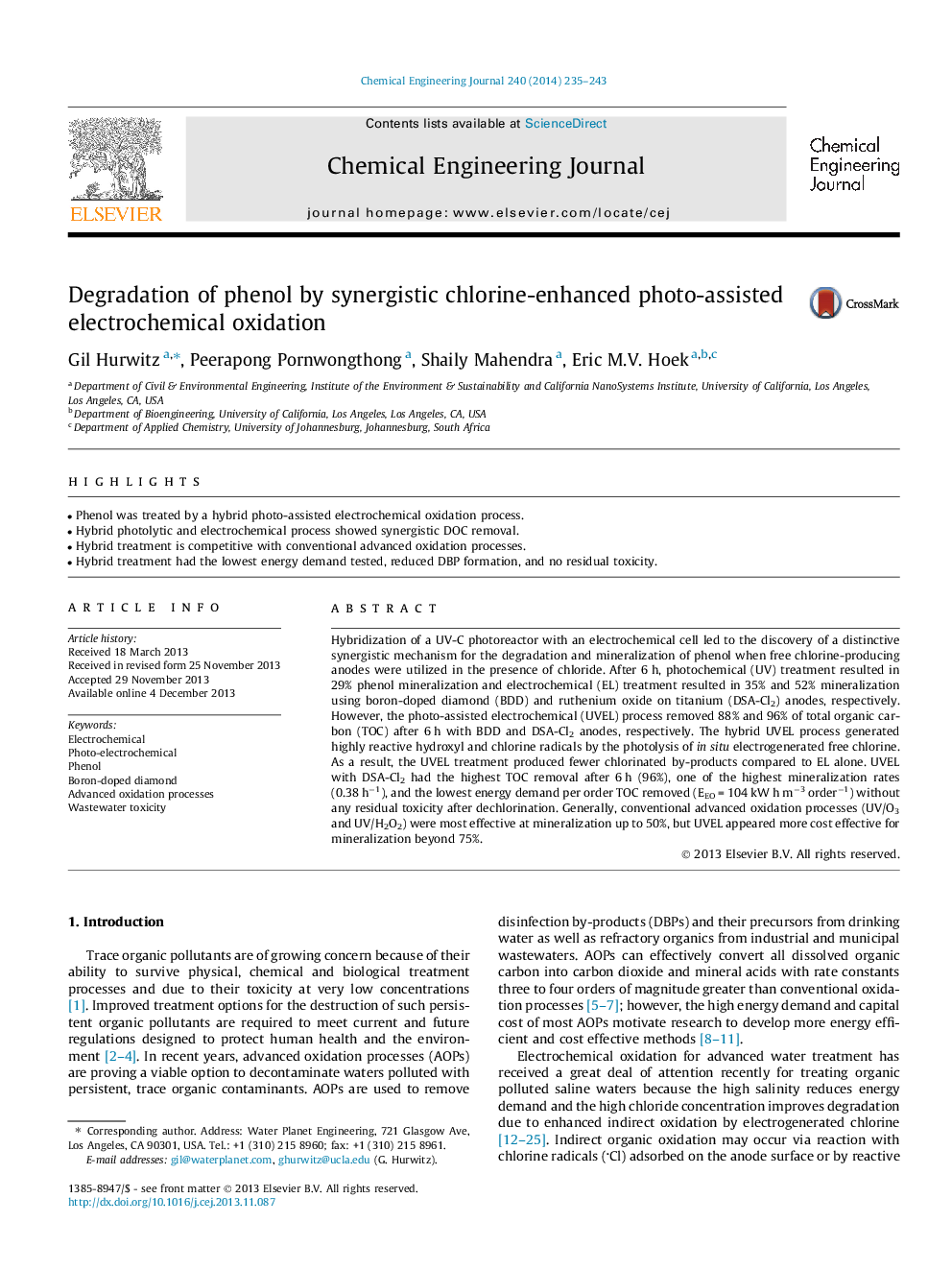| Article ID | Journal | Published Year | Pages | File Type |
|---|---|---|---|---|
| 147682 | Chemical Engineering Journal | 2014 | 9 Pages |
•Phenol was treated by a hybrid photo-assisted electrochemical oxidation process.•Hybrid photolytic and electrochemical process showed synergistic DOC removal.•Hybrid treatment is competitive with conventional advanced oxidation processes.•Hybrid treatment had the lowest energy demand tested, reduced DBP formation, and no residual toxicity.
Hybridization of a UV-C photoreactor with an electrochemical cell led to the discovery of a distinctive synergistic mechanism for the degradation and mineralization of phenol when free chlorine-producing anodes were utilized in the presence of chloride. After 6 h, photochemical (UV) treatment resulted in 29% phenol mineralization and electrochemical (EL) treatment resulted in 35% and 52% mineralization using boron-doped diamond (BDD) and ruthenium oxide on titanium (DSA-Cl2) anodes, respectively. However, the photo-assisted electrochemical (UVEL) process removed 88% and 96% of total organic carbon (TOC) after 6 h with BDD and DSA-Cl2 anodes, respectively. The hybrid UVEL process generated highly reactive hydroxyl and chlorine radicals by the photolysis of in situ electrogenerated free chlorine. As a result, the UVEL treatment produced fewer chlorinated by-products compared to EL alone. UVEL with DSA-Cl2 had the highest TOC removal after 6 h (96%), one of the highest mineralization rates (0.38 h−1), and the lowest energy demand per order TOC removed (EEO = 104 kW h m−3 order−1) without any residual toxicity after dechlorination. Generally, conventional advanced oxidation processes (UV/O3 and UV/H2O2) were most effective at mineralization up to 50%, but UVEL appeared more cost effective for mineralization beyond 75%.
